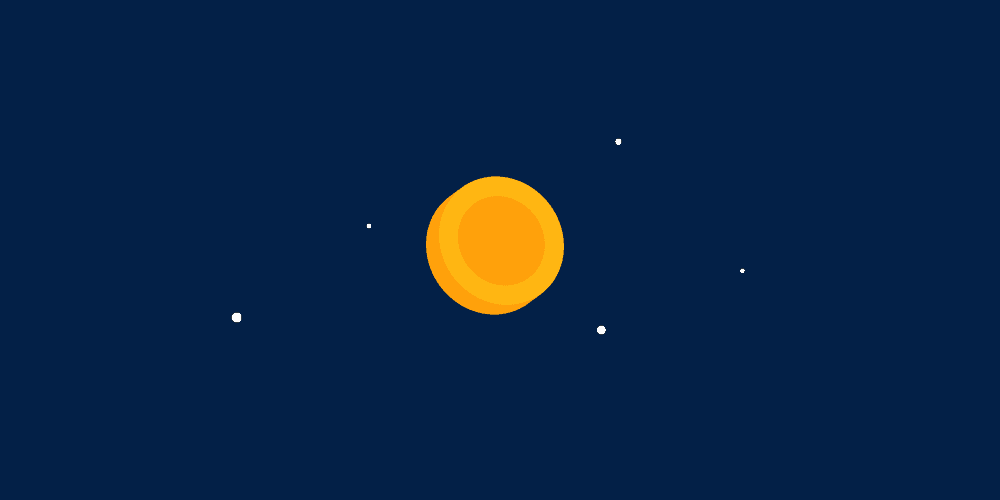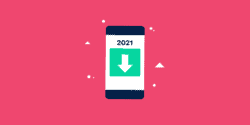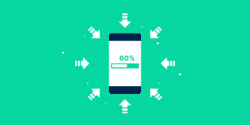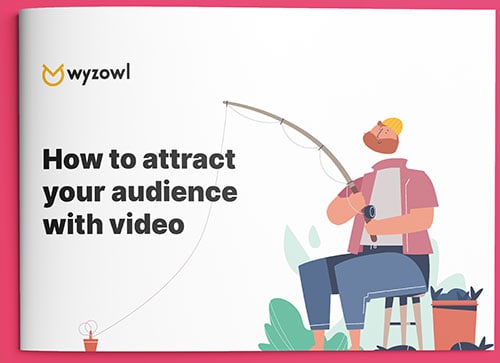From late 2017 into early 2018, there was one app that seemed to be on everyone’s lips: HQ Trivia.
If you were under a rock during that time period, HQ Trivia was a live quizzing app that anyone could play on their smartphone to win cash prizes.
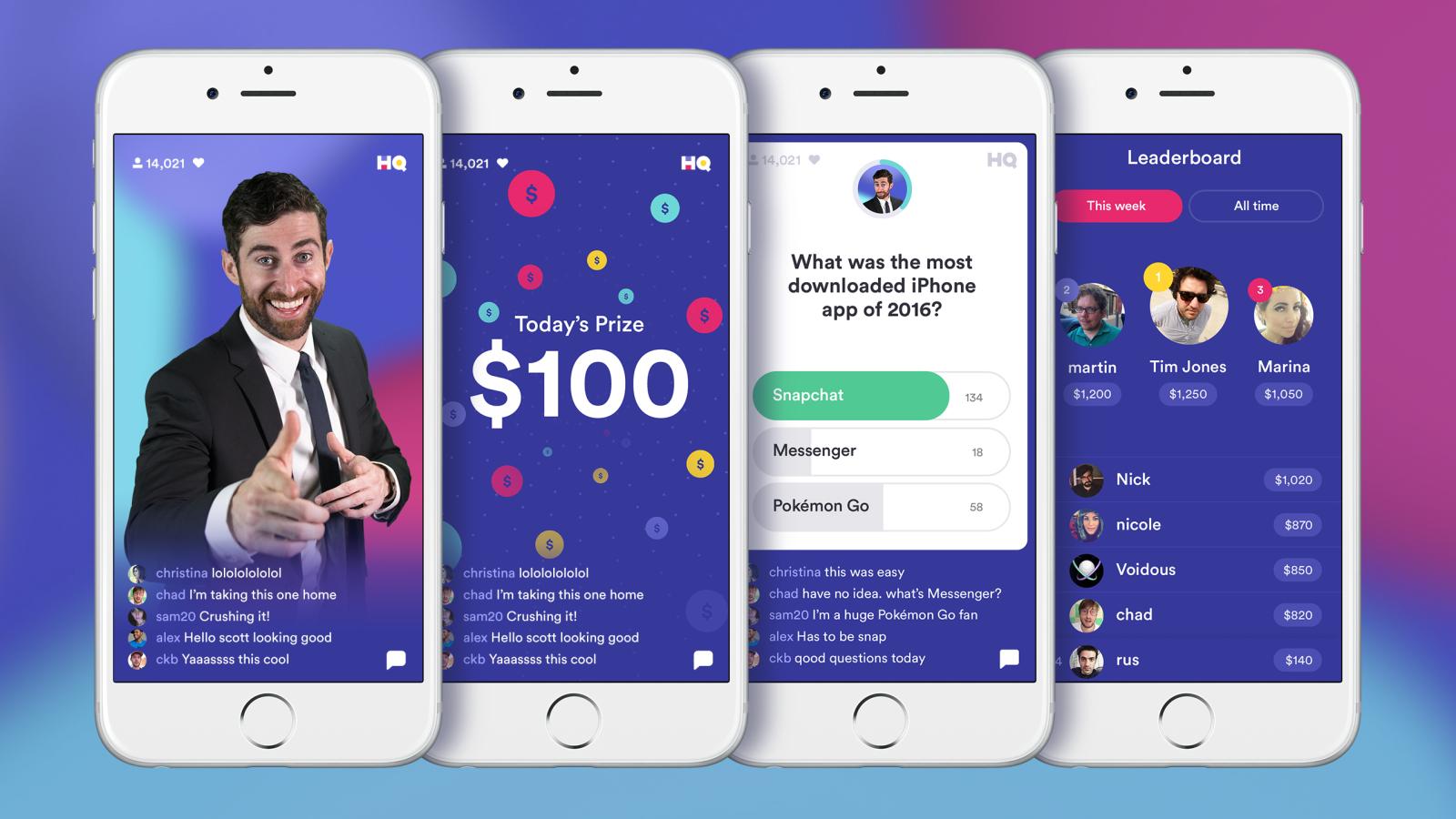
The app gained a massive fanbase and when it reached its peak there were millions of people tuning in daily, and even some celebrities making hosting appearances:

But the app’s success actually turned into its downfall – because the more people who showed up to play the game, the higher the prize money had to be. And HQ Trivia was not monetized in any way.
This is surprising because it was created by the same people who lost Vine in the exact same way a couple of years before.
HQ Trivia tried to monetize themselves retroactively, but nobody – not even millions of loyal fans – will pay for something they once got for free.
And that brings us to the topic of this article. If you want your app to have the best chance of succeeding, you need to think of ways to effectively monetize it from the very beginning.
From the obvious to the outside-the-box brilliant, we’ve collected 12 actionable ideas to help you do just that…
Contents
1. Put a price tag on it
First, it’s worth pointing out that you aren’t obligated to make your app free. Some apps do charge a fee up front:
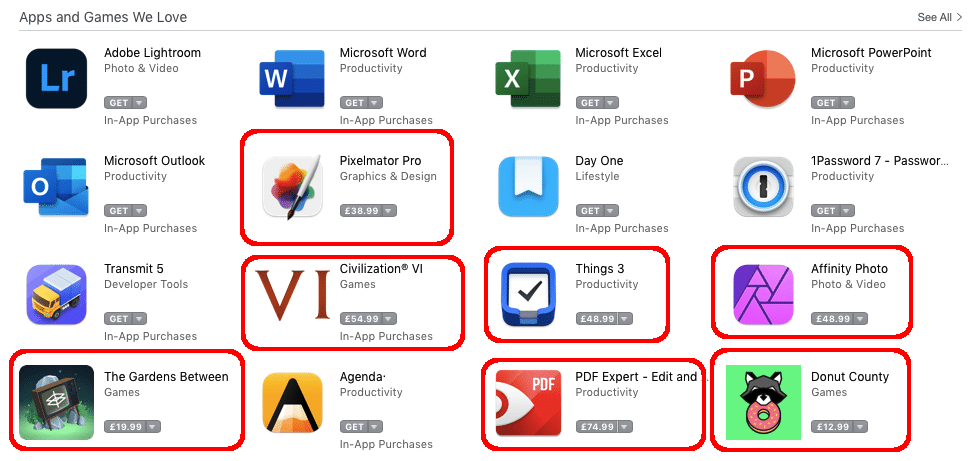
This can be a simple and straight-forward way to cover costs and help to make sure your app isn’t going to go under because of lack of revenue.
However, while paid apps do get more revenue per downloads, free apps are the ones that get more downloads – and downloads are what you need if you want your app to survive long-term.
If this is the route you want to take, it’s also worth considering that almost 97% of apps in the App Store and on Google Play are listed as free (as of 2021). So asking for a download fee will instantly put your app in a minority.
While it’s clear this is a viable option, there are many other ways to monetize your app.
2. Ad revenue
This is one of the most popular ways that free apps earn their money. And it’s no wonder. Ads are a great way to earn a steady stream of revenue without asking your users for anything.
Plus, your users are already exposed to ads everywhere, so they’re not going to be shocked or disgruntled to see them within your app. In fact, most modern users generally understand that ads – while annoying – are a fair trade off for free usage.
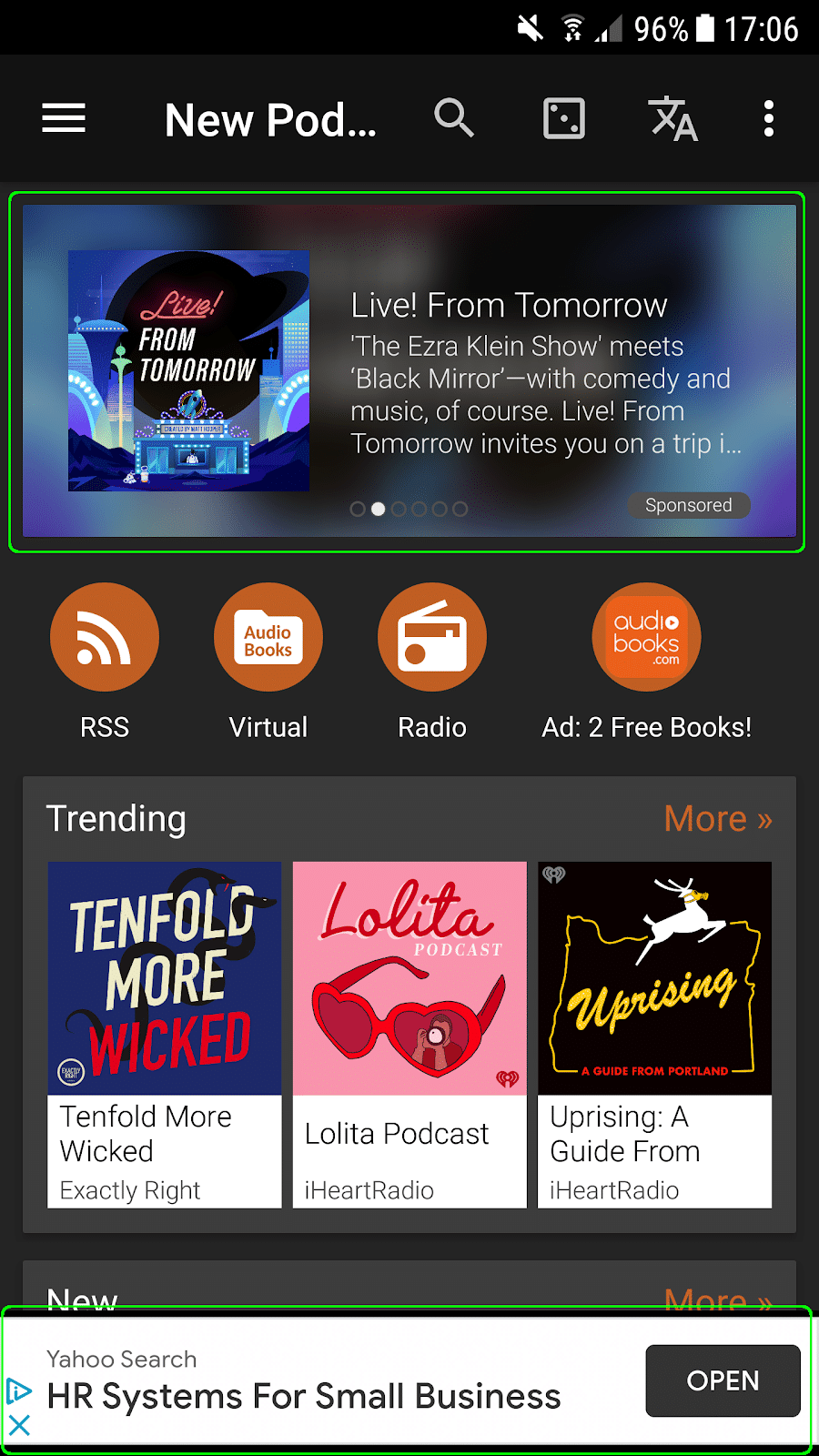
A survey by IAB UK discovered that 84% of users prefer ads to paying for an ad-free experience.
There are a couple of different types of ads users expect to find within mobile apps.
i. Video
Short video ads are an amazing, user-friendly way to market other products within your app. When asked how they’d most like to learn about a product or service, most people (69%) would rather watch a short video.
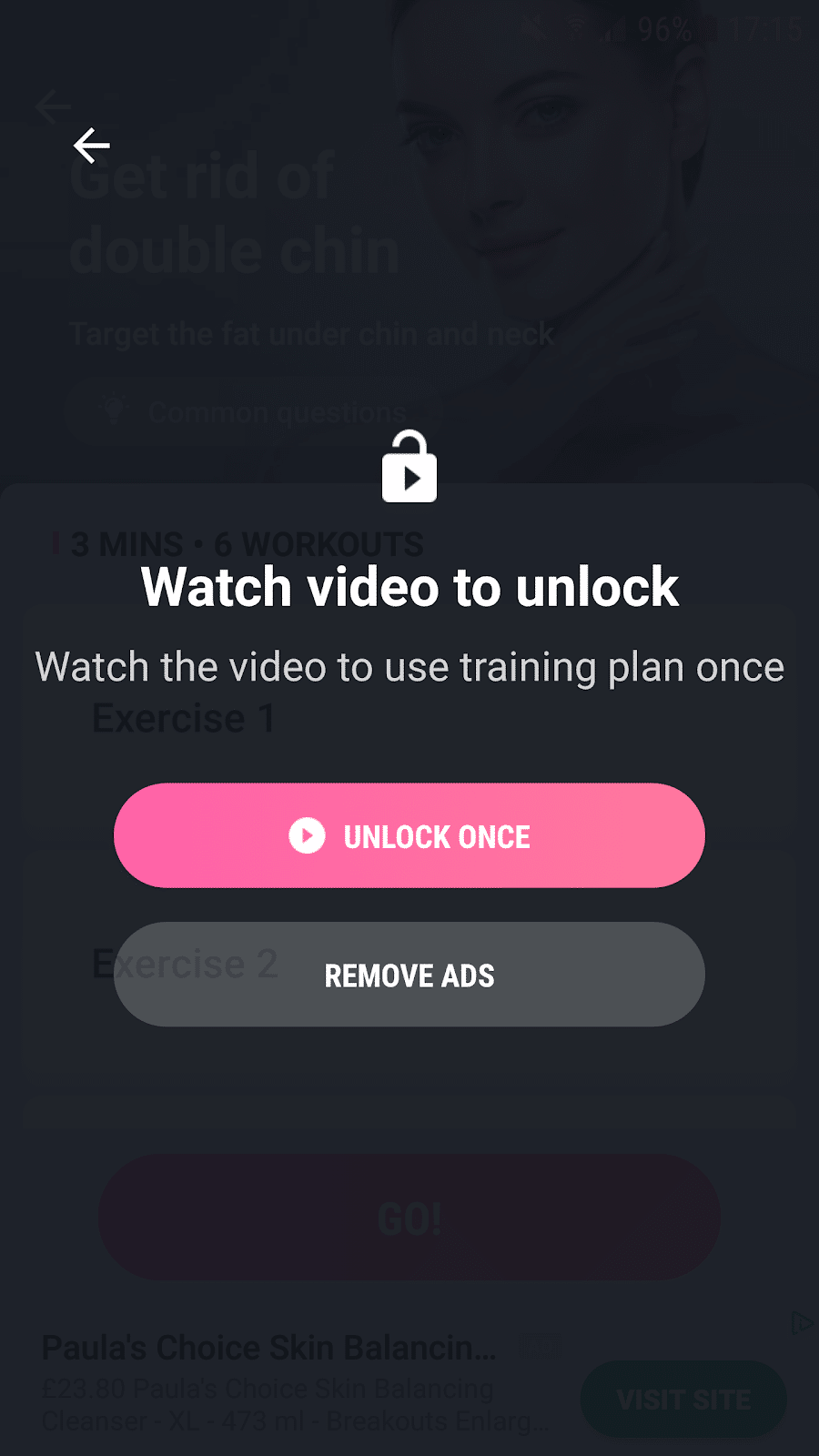
In addition, our 2021 video marketing survey found that 84% of video marketers say video has helped them to increase leads.
Why should this matter to you?
Because every time someone clicks on an ad in your app you generate revenue – so the more appealing the ads, the more money you make!
ii. Interstitials
These are full screen ads that can be still graphics or videos. They’re typically placed at a natural pause point – such as moving between menu screens or (in gaming apps) at the end of a level.
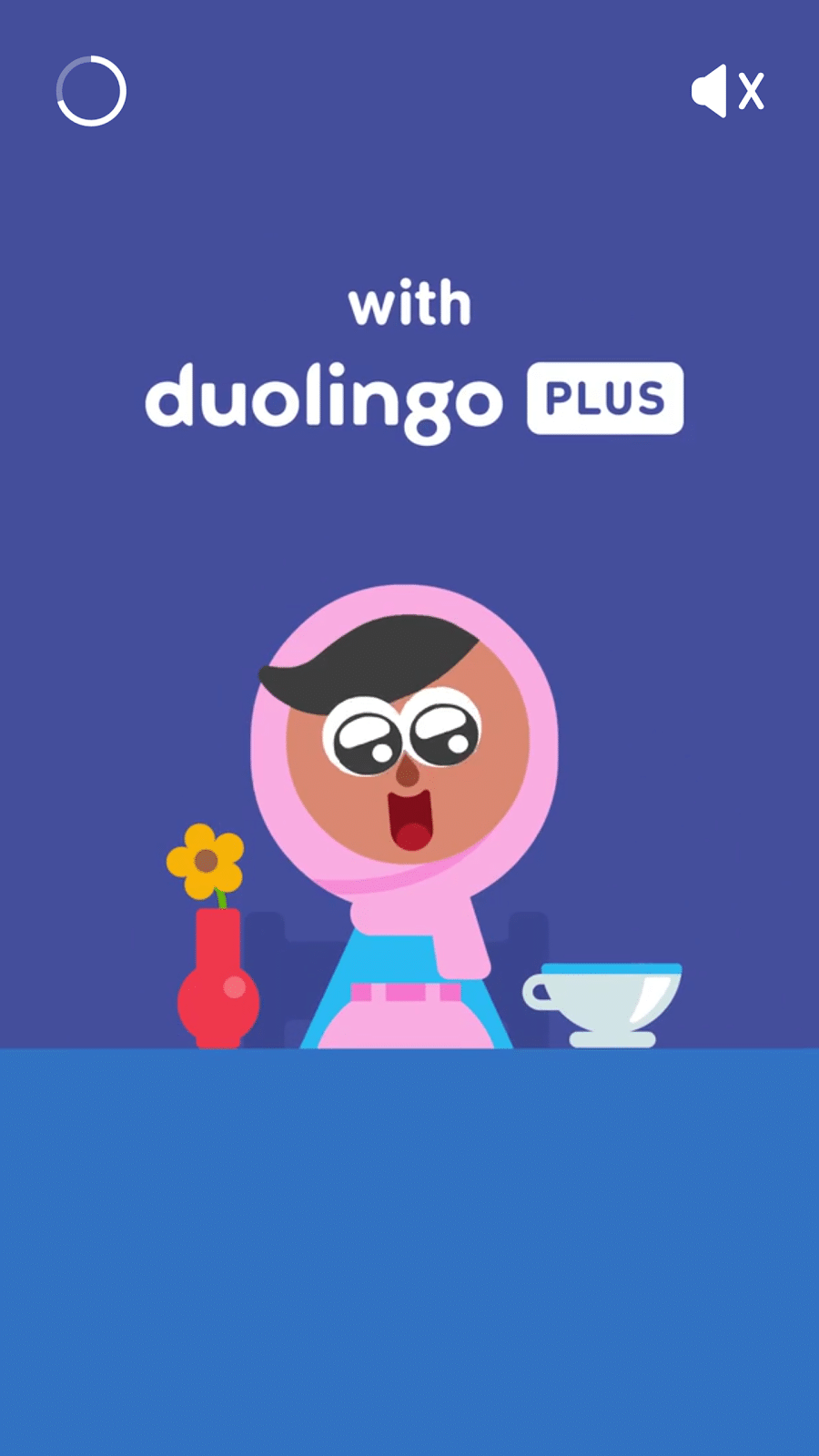
These ads, although full screen, tend to be less intrusive because they are placed at these natural pause points – meaning they detract from the user’s experience of the app.
iii. Banner
Banner ads are pretty self-explanatory. We’ve all seen them. In fact, some studies believe we see between 6,000 and 10,000 ads a day.
Banner ads are usually placed along the edge of app screens, but we’re so used to them that most of us barely even register they’re there:
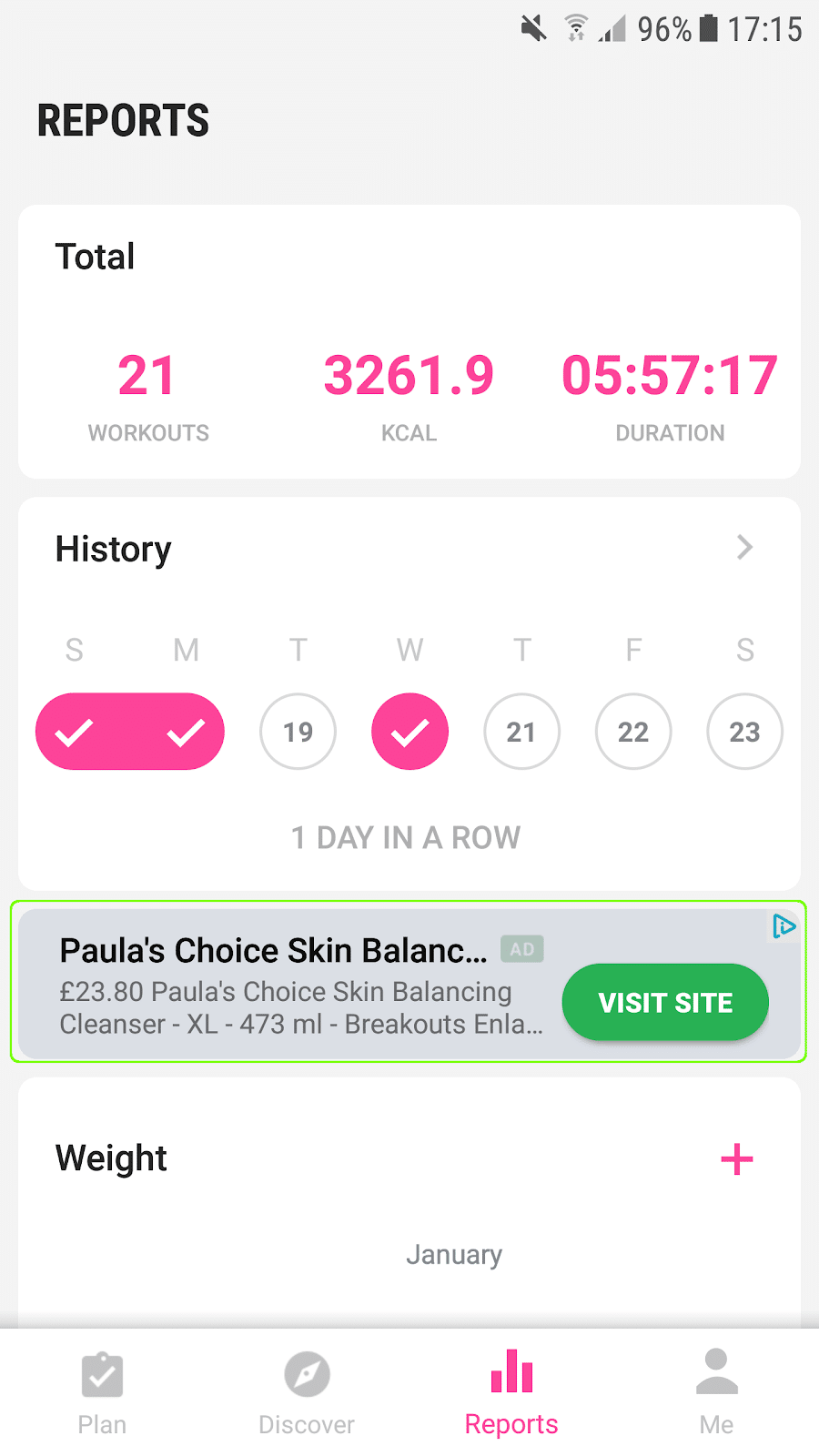
This “banner blindness” can make them a non-intrusive option for advertising within your app – but it can also mean that less people will click on them. And when it comes to monetization through ad revenue, those clicks are what advertisers are paying you for.
3. In-app purchases
Another way to monetize your mobile app is by offering in-app purchases to your users. These are items that users can purchase to enhance their experience.
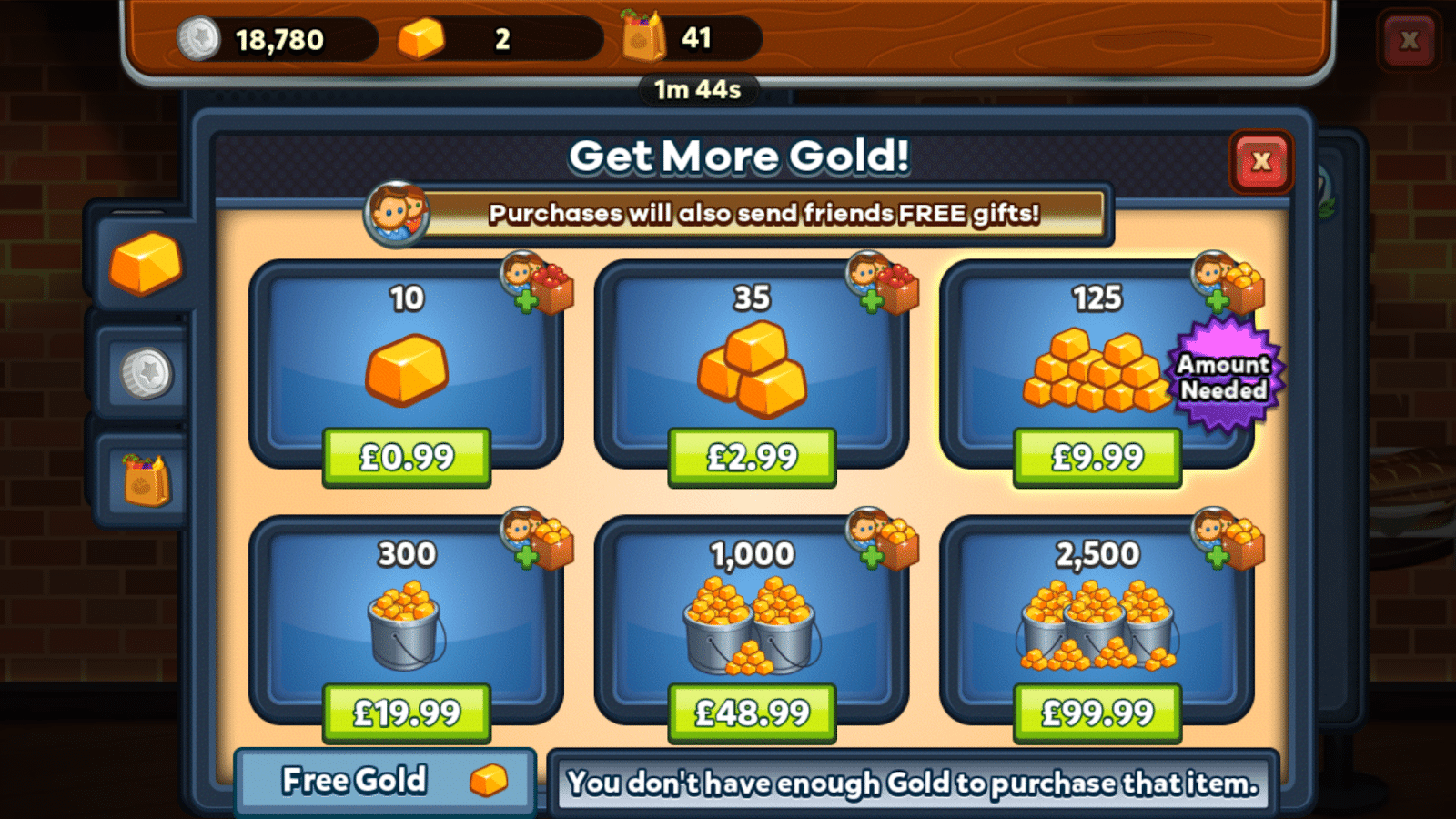
This is a great way to monetize your mobile app because it puts the choice in your user’s hands. It allows them to make the decision as to whether or not they want to make a purchase.
In-app purchases are most commonly used in gaming apps, like the super-popular Candy Crush Saga. This titan of the app world dominates the gaming charts. According to Statista, it was ranked #5 in September 2020 in the leading mobile gaming app titles in Google Play worldwide for revenue, coming in at a cool £40 million.
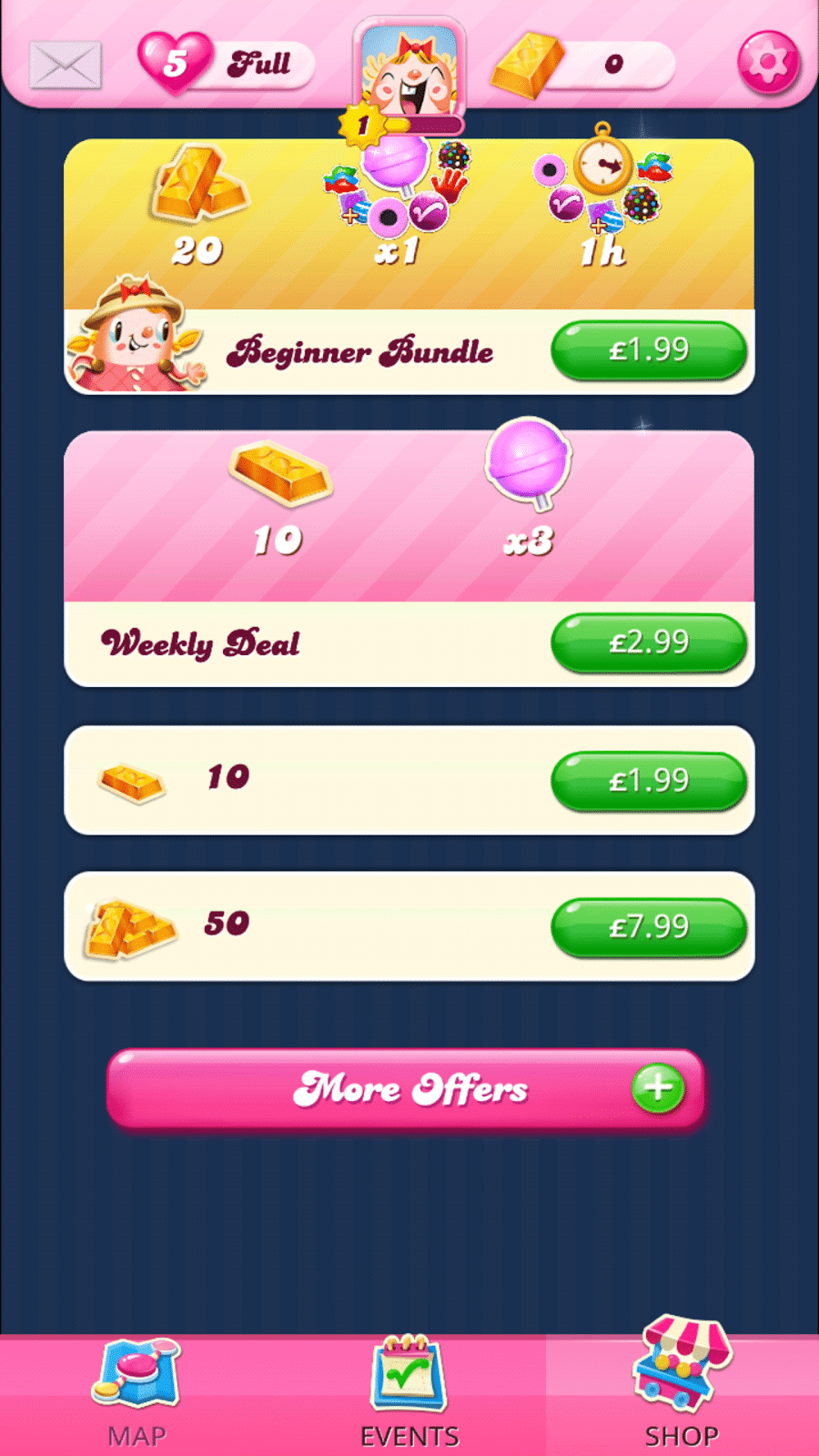
The key to this monetization strategy is that your app must be enjoyable without the purchases, while also giving users the chance to elevate their experience (with the purchases).
When done correctly, in-app purchases can be great for both you and your users – but there is a fine line you must tread.
If you offer too many options for free then nobody is going to pay for your in-app purchases. And if you don’t offer enough for free then users will be frustrated and delete the app.
4. Freemium model
Freemium pricing is a very popular monetization model used by a lot of huge, well-established apps, such as Duolingo and Spotify.
Freemium apps typically have a free plan and a premium plan that users can upgrade to for a fee – this can be a one-off fee or a subscription (more on that later).
This is different to a free trial that gives users access to all features for a period of time. Freemium apps are “free forever”, with limited features.
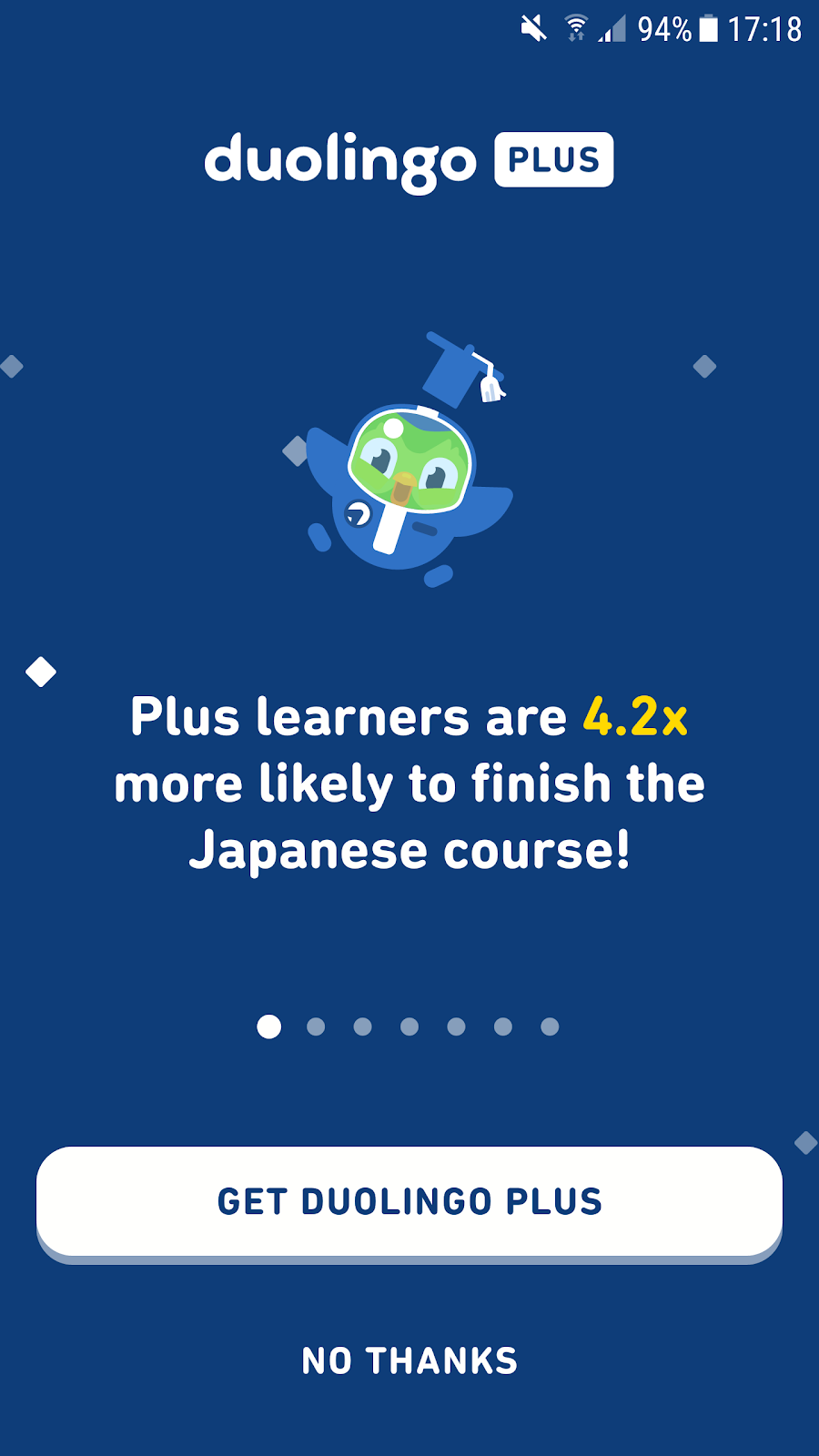
Then, if users want access to more features – or even just to remove ads – they can opt for premium.
It’s kind of like in-app purchases, only you’re asking users to make one big purchase instead of lots of mini ones. Another similarity to the in-app purchases model is that fine line between making the free version enjoyable while also enticing users with a more desirable premium option.
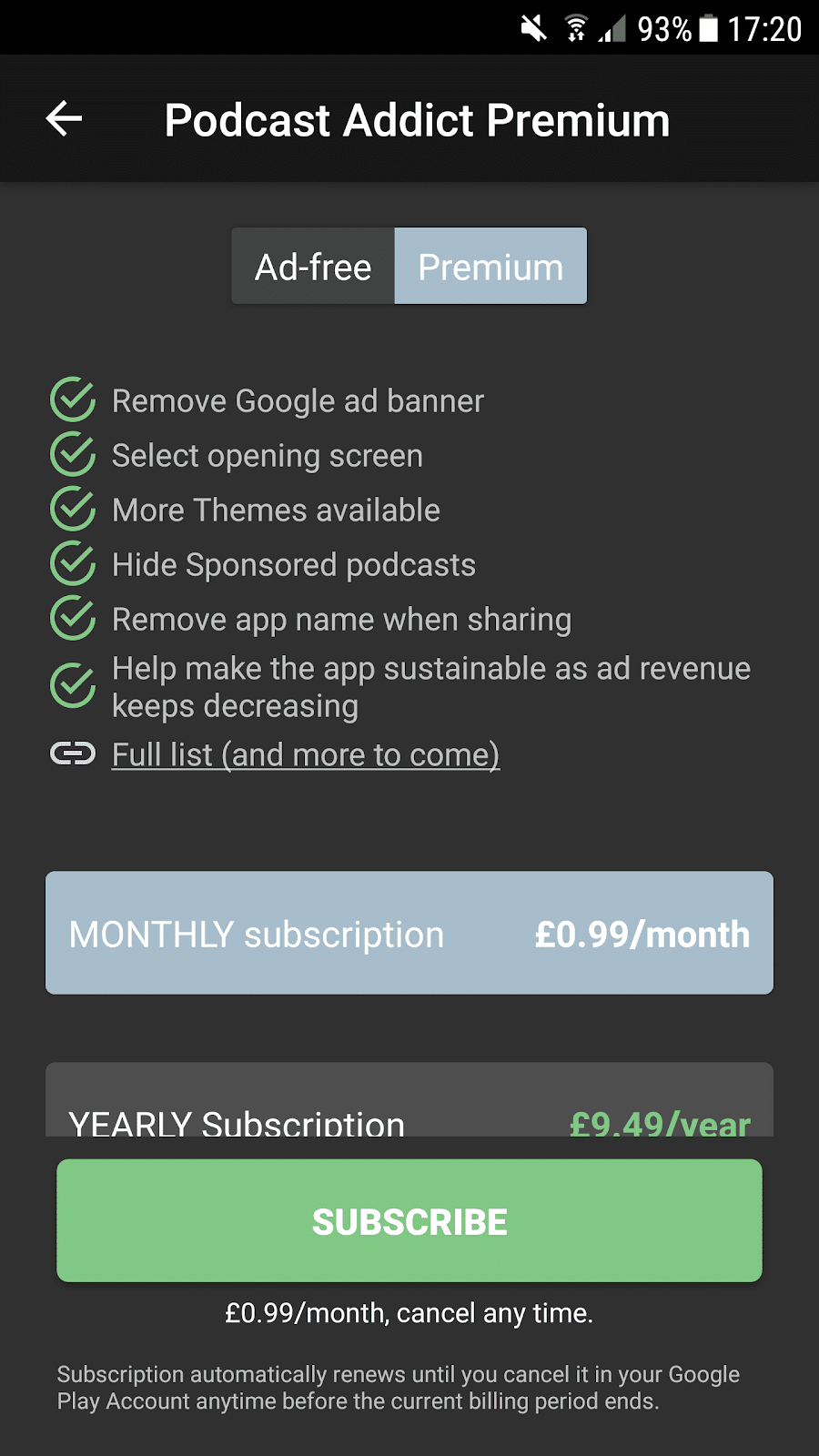
There’s a reason a lot of successful apps are using a monetization model like this – it works. Surprisingly, only 1.75% of Duolingo’s users pay for premium. However, thanks to the popularity they’ve been able to drum up through their free version, their user base is huge. So that 1.75% was predicted to generate $160 million in 2020 (official numbers haven’t yet been released).
5. Whitelabel your code
Not all monetization strategies need to involve your users. An additional way to monetize your app that doesn’t impact your users in any way is to whitelabel your code.
This means making your code available for sale to other developers so that they can use the blueprint for their app. This is often referred to as ‘reskinning’ and common examples come from apps that want to make use of a celebrity, or another form of popular media (such as a movie) for marketing purposes.
Here’s an example:
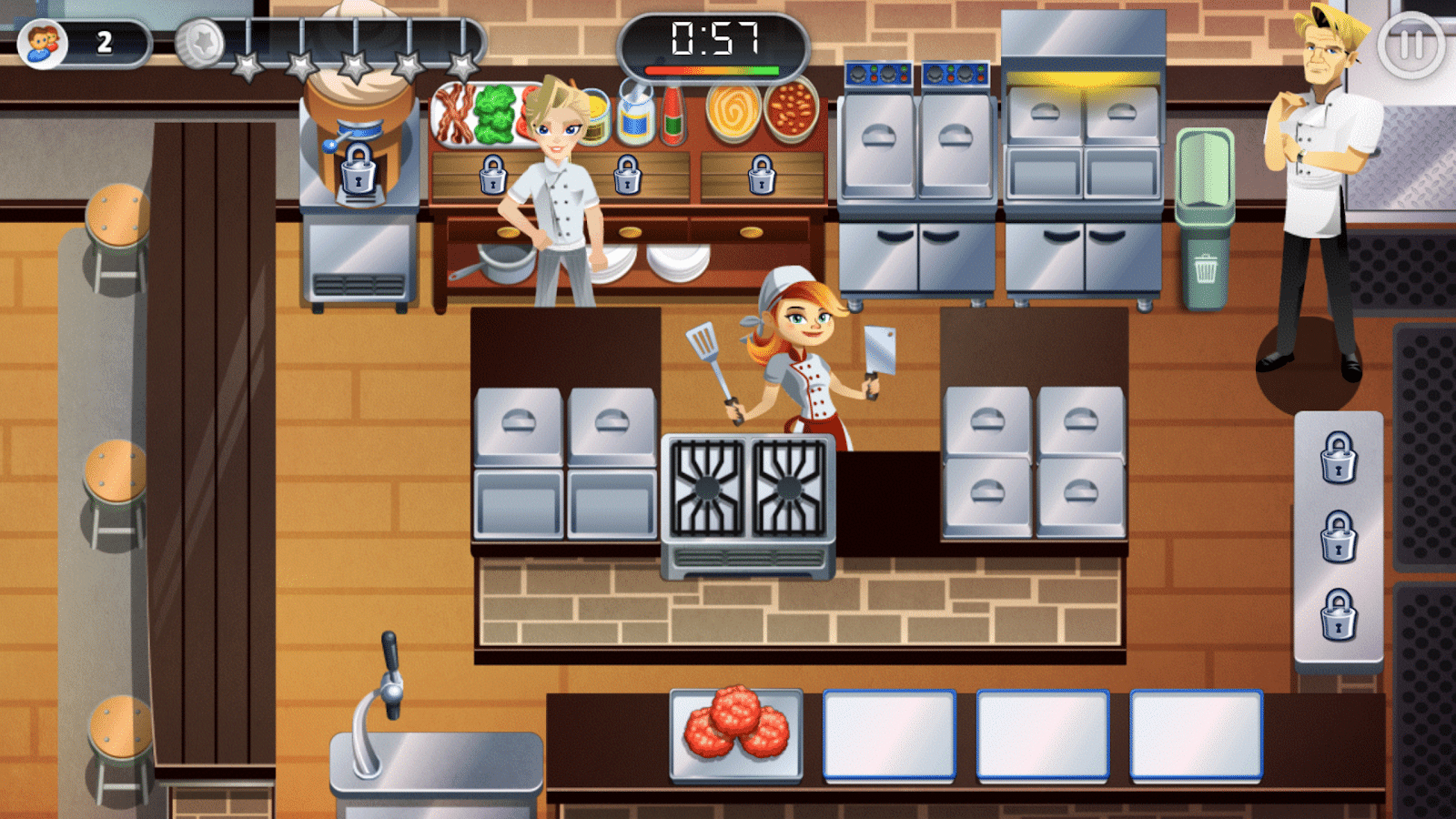
This Gordon Ramsay Restaurant Dash game is a reskin of the Cooking Dash game, released a couple of years prior:
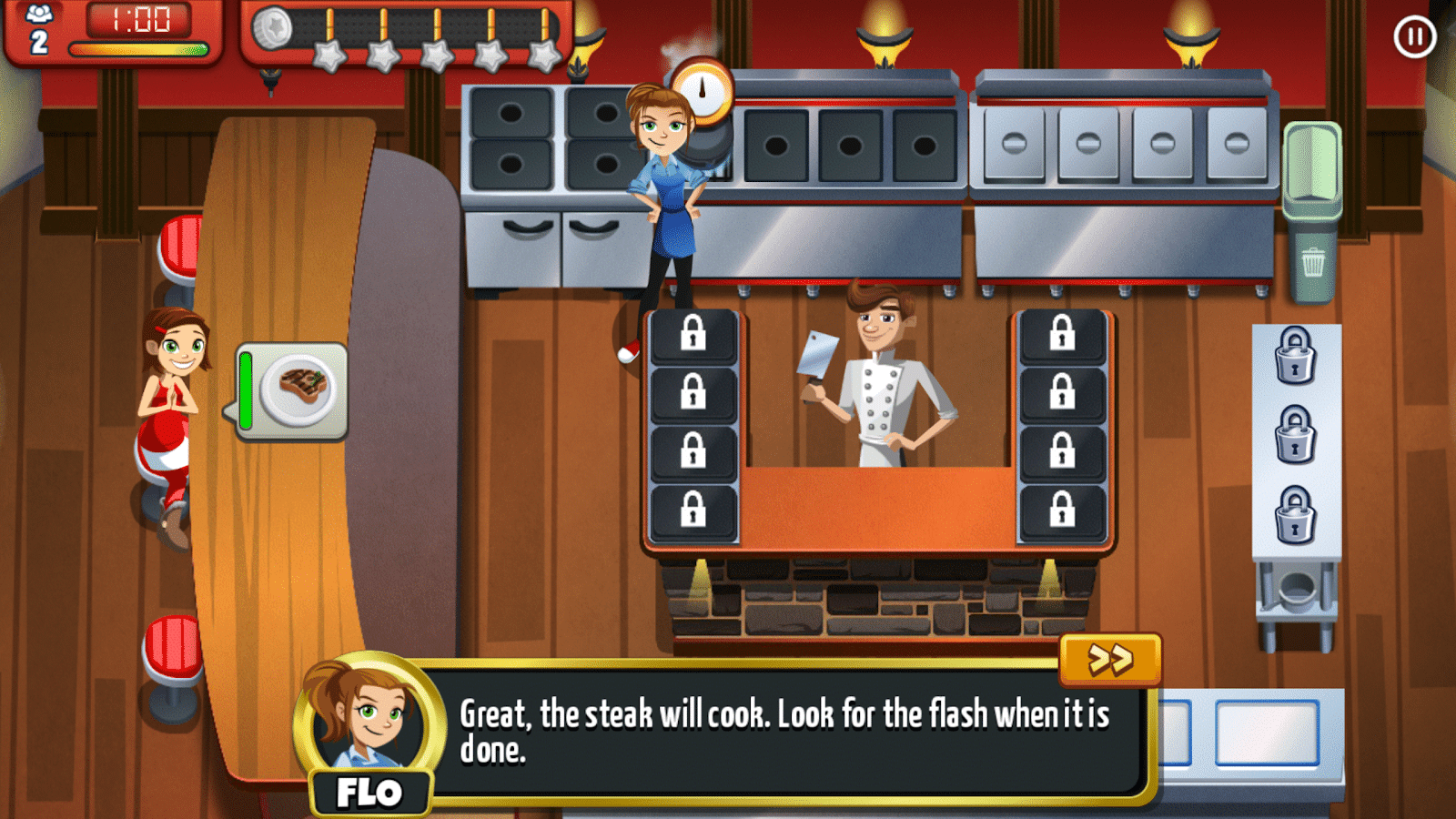
You can see here that both games were created by the same developer, Glu:
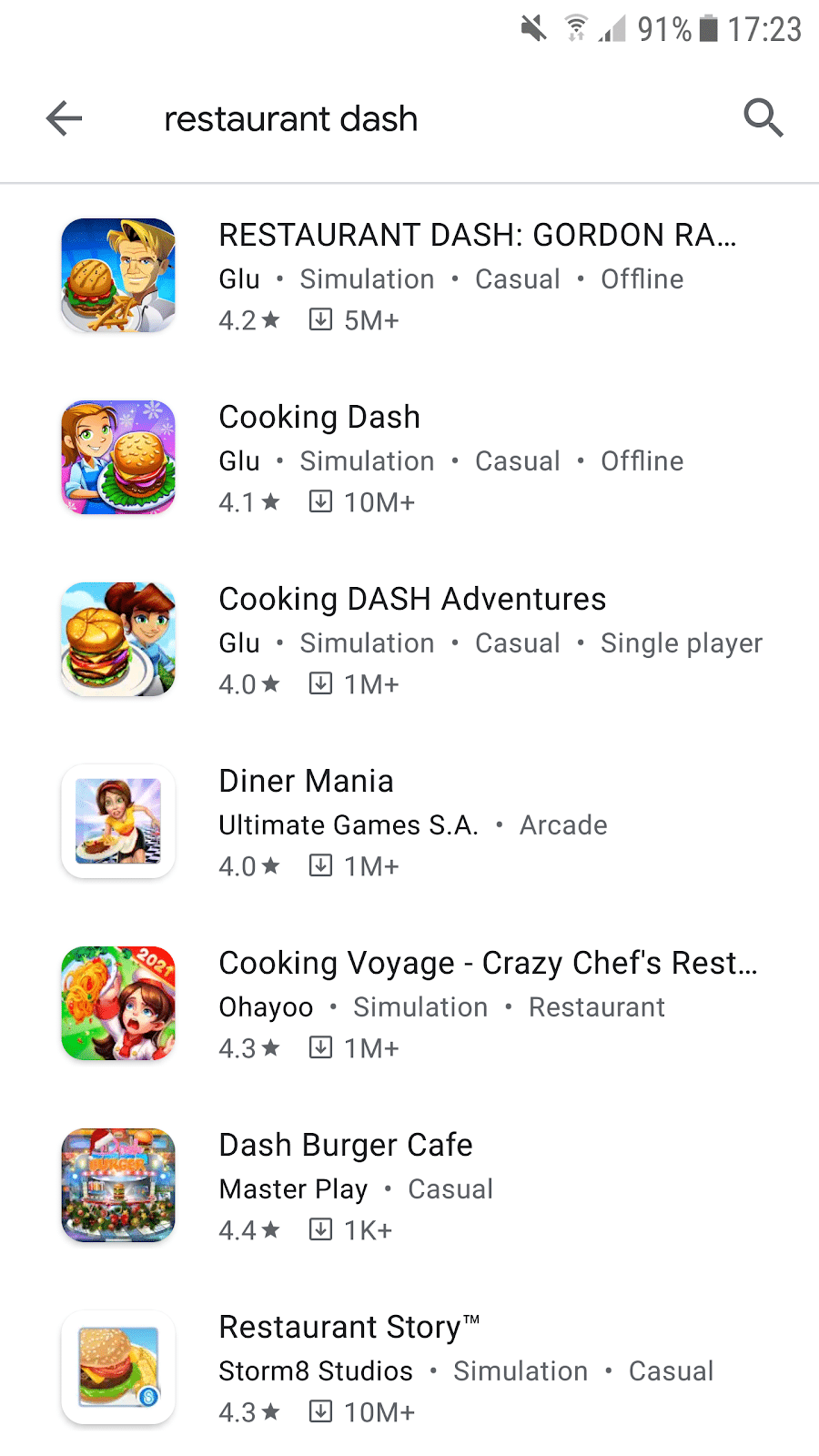
Creating strong code is not only beneficial for whitelabelling, it can also help you to sell your app in the future – if you wish to do so.
6. Referral schemes
With referral schemes, it’s all about giving a little to get a little. This may seem counterintuitive when you’re focusing on monetization, but sometimes you have to spend money to make money.
By using enticing offers to lure more users to your app, you will increase your user base and simultaneously increase your chance to make revenue through other monetization strategies, such as ads and in-app purchases.
Here’s an example from Natural Cycles:
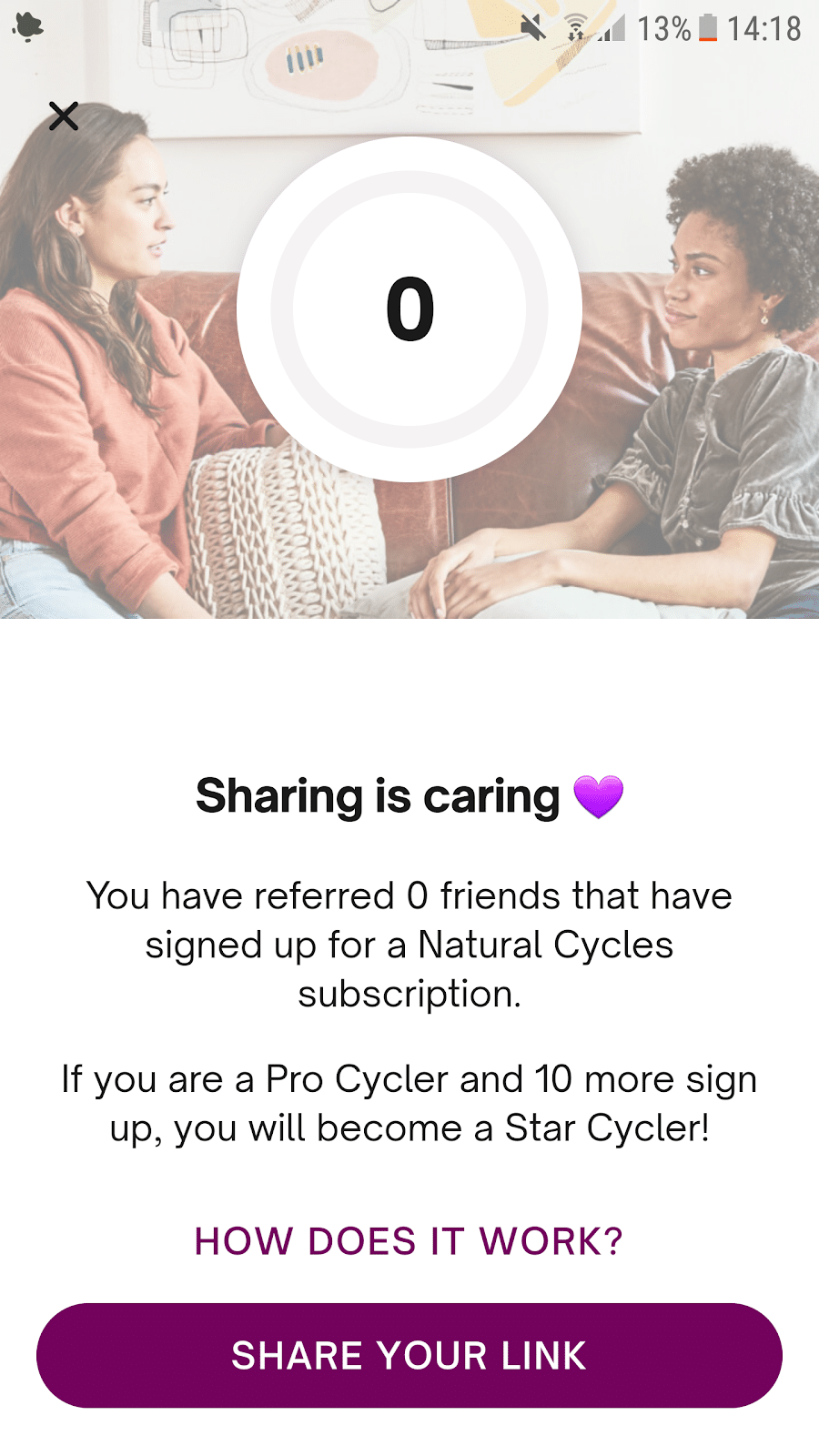
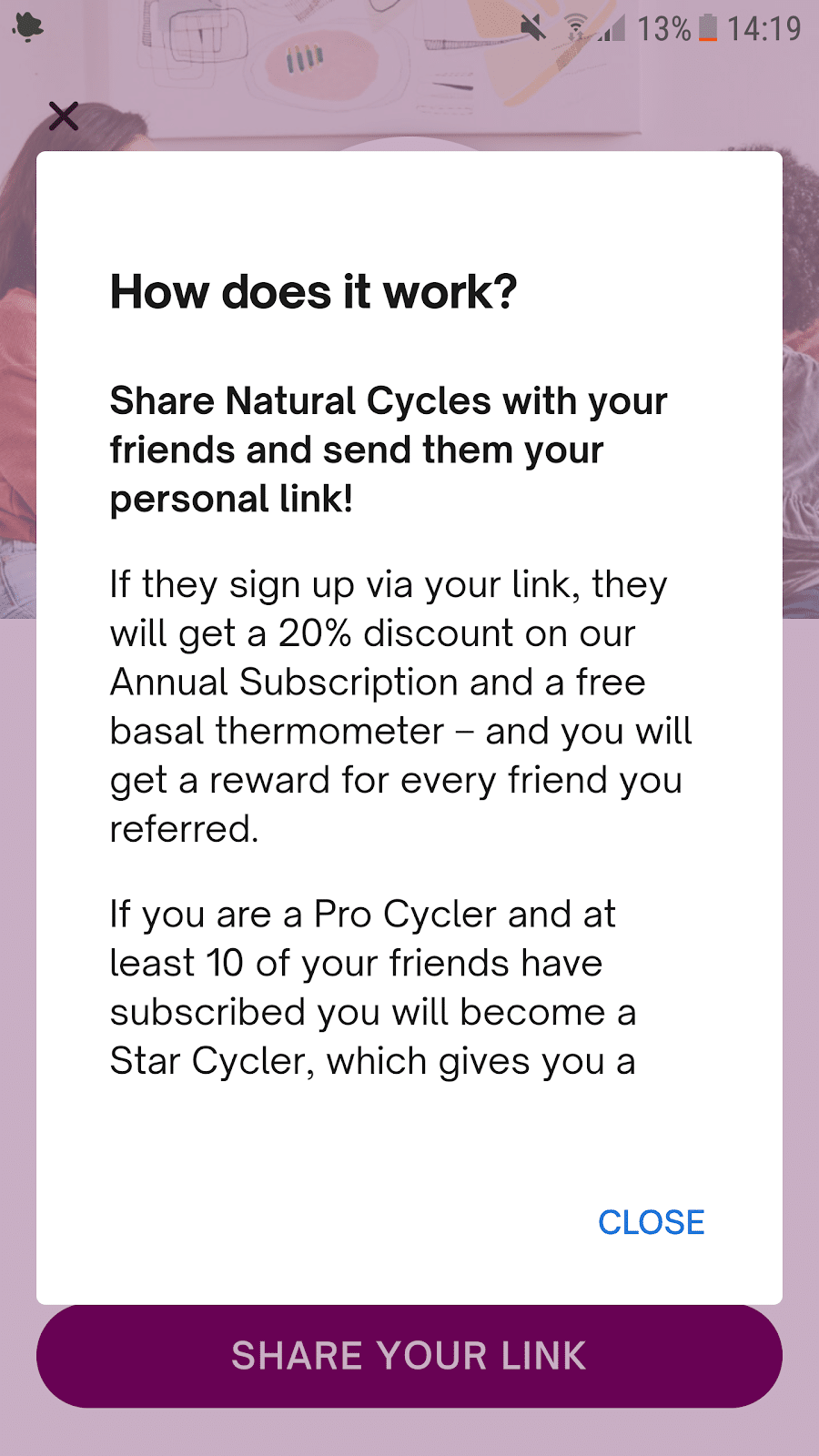
The referral scheme encourages users to refer a friend in exchange for a reward. The more friends they refer, the more rewards they get.
7. Subscription model
From subscribing to Netflix for our entertainment, to HelloFresh for our meals, to Glossybox for our beauty products – subscriptions are everywhere right now. They’re touching every part of our lives. And that includes apps.
While people may be averse to paying an upfront fee to download your app, they may be more open to a subscription model that charges a smaller monthly fee and also gives them the freedom to leave at any time.
The meditation app, Headspace is a great example of this. Users can subscribe for as little as £4.17 per month:
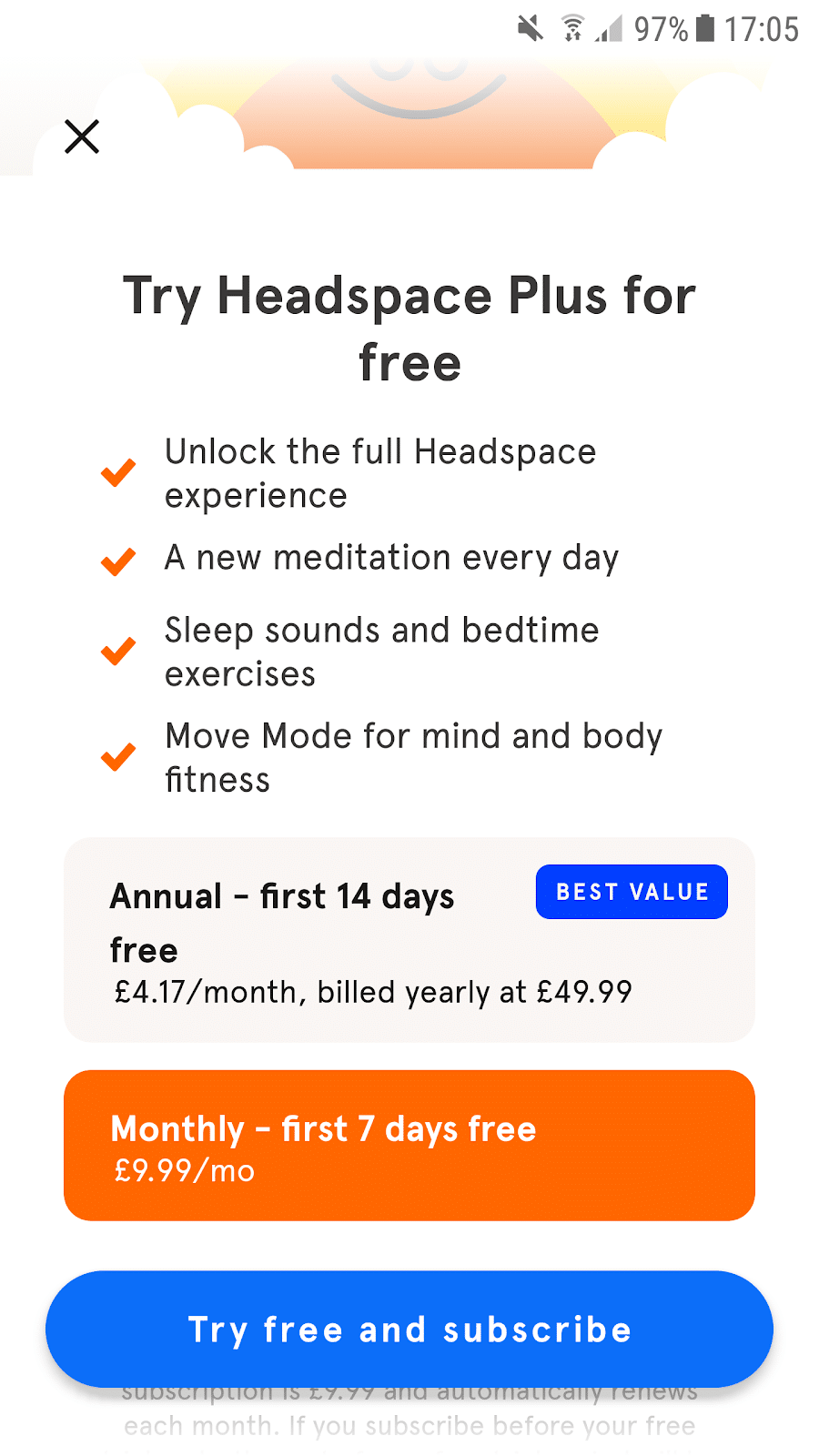
Users love subscriptions! According to a study by Invesp, 42% of men and 28% of women have three or more active subscriptions – and when asked why they continue to subscribe for services, 24% cited convenience and 23% felt it was because they got good value for money.
In addition to offering value and convenience to users, a subscription model also offers you a consistent and predictable cash flow, helping you to make your app more financially stable.
8. Ask for donations
At first, it may feel difficult to monetize your app – especially with so many on the app store for free. But today’s user understands the trials that come with creating something – whether that’s a podcast, an app, or a video – and they are willing to pay for what they believe adds value to their lives.
This is particularly true since the COVID-19 pandemic. According to a Harris Poll Survey conducted for Fast Company, 21% of people now give more to charity than they used to.
And, charity aside, sites like Patreon have seen an influx in users. An article posted on Patreon’s blog in March 2020 said that “an unusually large number of fans are subscribing to creators on Patreon” and “we’ve seen slightly more pledge deletion, but not nearly enough to offset the increasing numbers of new pledges.”
So, the bottom line is, if people love your app then they will be happy to pay for it in some way, shape, or form.
If you’re not into Patreon, there are other donation sites out there, like Buy Me a Coffee. Once you’ve chosen your designated donation platform, all you need to do is start asking your users if they would like to donate.
This could be done via email, push notifications, or through persuasive content.
9. Increase customer loyalty
In the same way that referrals can increase your chances of monetization through gathering more users, increasing customer loyalty can do the same by simply focusing on increasing the lifespan of your existing users.
All you need to do is continuously think of new and exciting ways to keep your app users engaged.
One popular method for doing this is gamification. By gamifying the experience, your users will feel rewarded for using your app – encouraging them to use it even more.
Audible is great at doing this. They give users badges for using the app in different ways, and this can encourage users to use the app in ways they never would have considered in order to complete their badge collection.
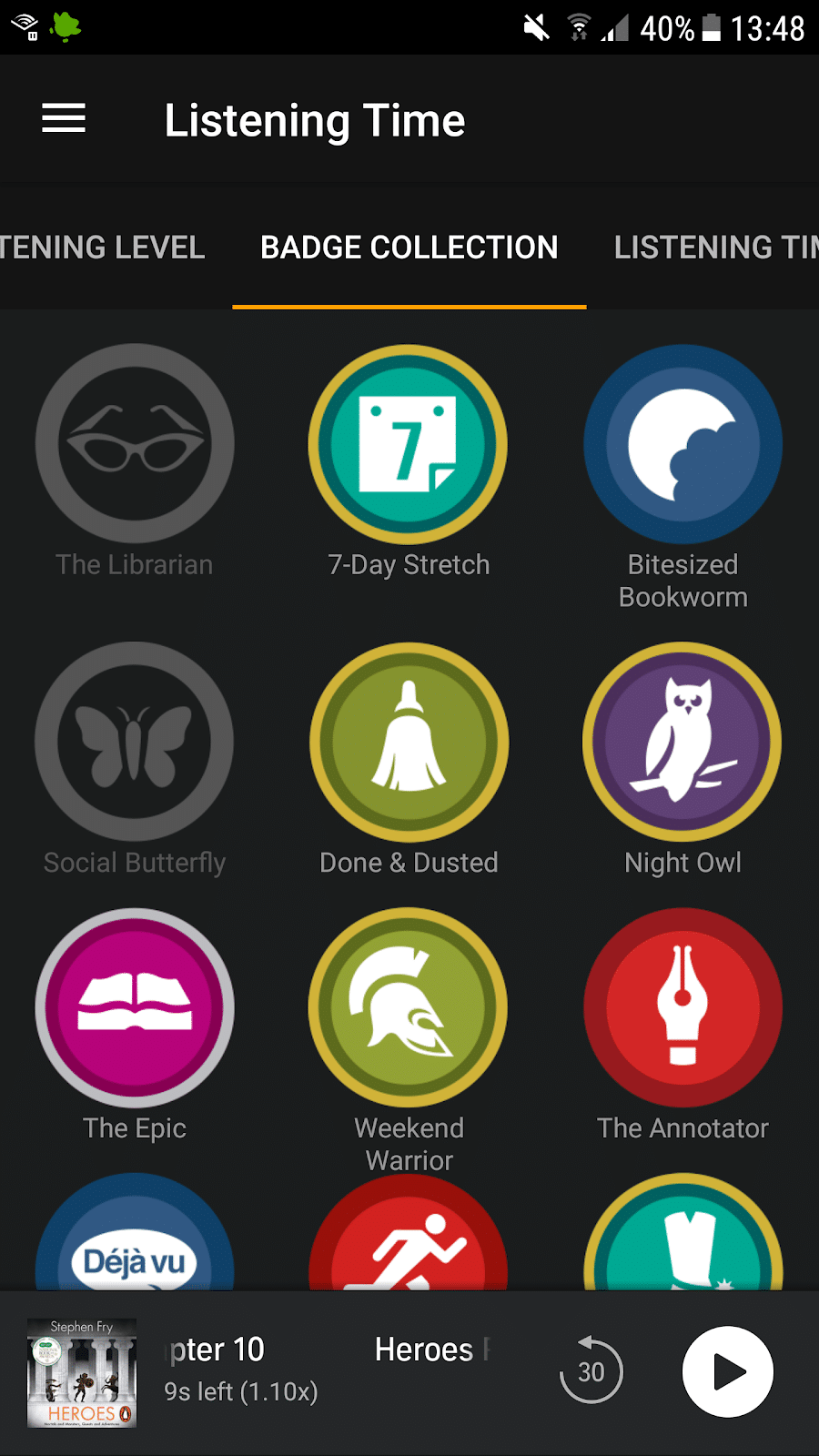
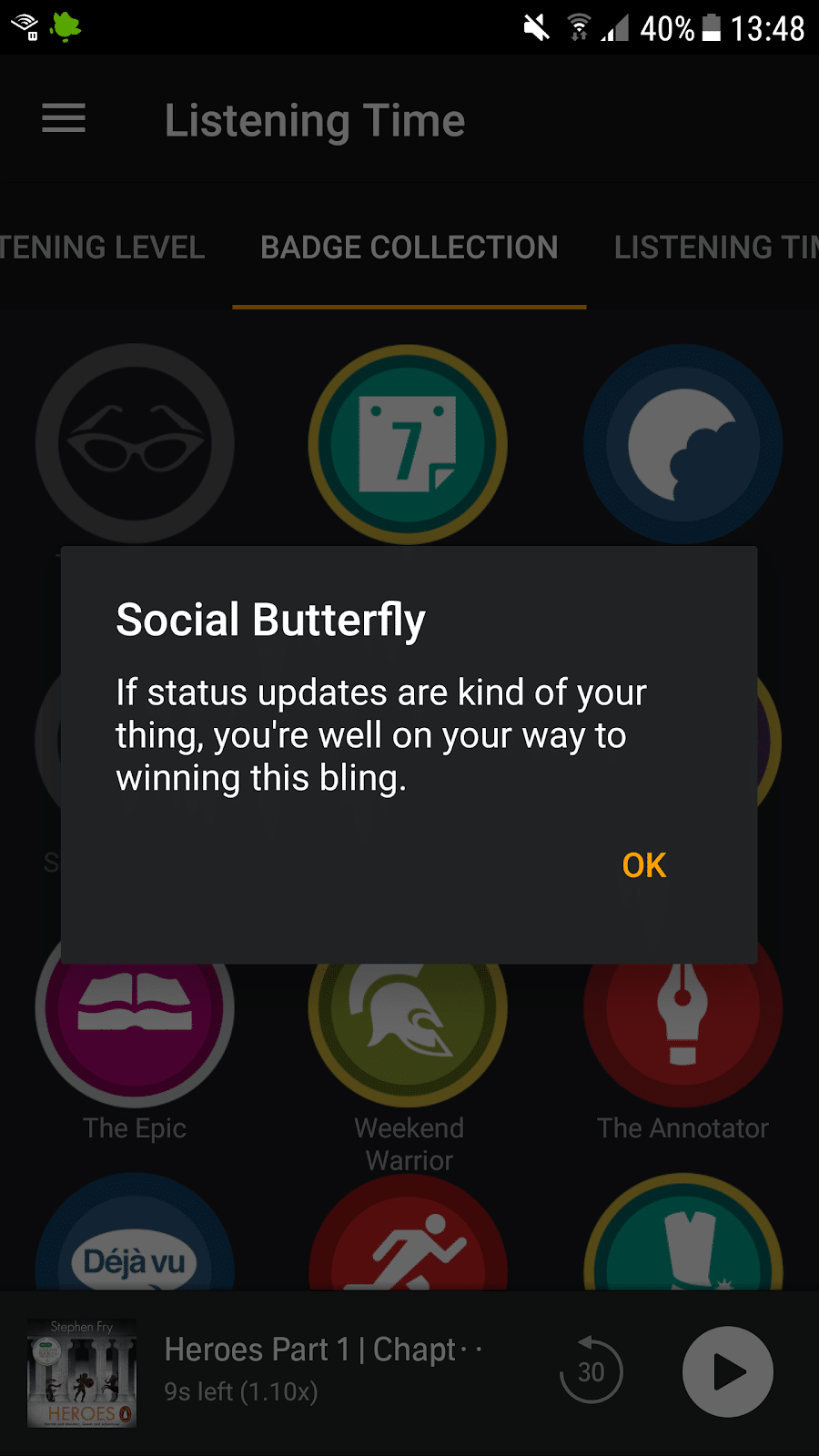
10. Sponsorship
If you pitched to an investor to raise funds for your app before the launch, then you’ll know how important it can be to have a big player backing you.
By partnering with another brand, particularly one bigger than yours, you can open yourself up to a much wider audience.
Here’s how it works: you find a sponsor or a partner that has an app that complements yours. For example, let’s say you have a yoga app that features different yoga classes of varying lengths and intensity. A great sponsor for an app like that would be a yoga equipment and apparel store, like Lululemon.
So, you would approach Lululemon – in the same way you approached investors before your launch – and ask them if they would like to partner with you.
You can feature Lululemon ads in your app, between yoga classes. And in return Lululemon would promote your app to its huge customer base – you both win!
11. Data monetization
Whenever a user interacts with your app, they generate data. And this data can be very useful to you in a number of ways.
For starters, it helps you to understand your users better – what features they like, when they are most likely to open the app, and so on.
But this data can also be anonymised and quantified, and transformed into what’s known as “big data” – and big data can sell for big bucks!
This data can effectively be sold to your advertisers so that they can create more tailored ads for your app, resulting in increased revenue for you and your advertisers – and also a better user experience for your customers.
Customer data, in this sense, is almost being used like a currency. Instead of asking them to pay for your app with money, you’re asking them to pay with their data instead.
And the key word here is asking – if you want to utilise data monetization then you need to make it clear to users and offer them the chance to opt-out if they aren’t comfortable with it.
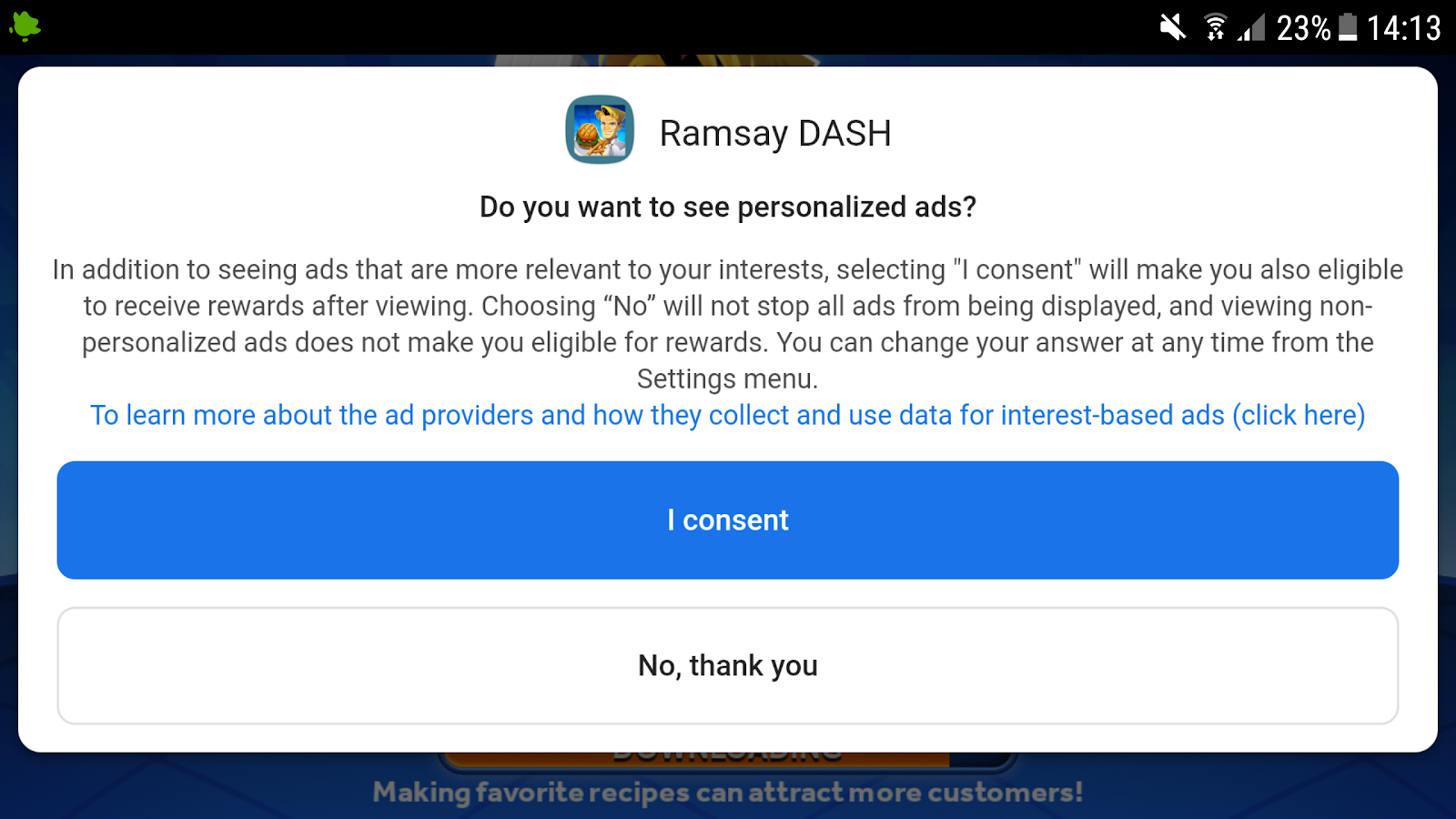
12. Transactional fees
If your app involves transactions, for example – a trading app like Bux or an invoicing app like QuickBooks, then you can monetize it by taking a small portion of the transaction – known as a transactional fee.
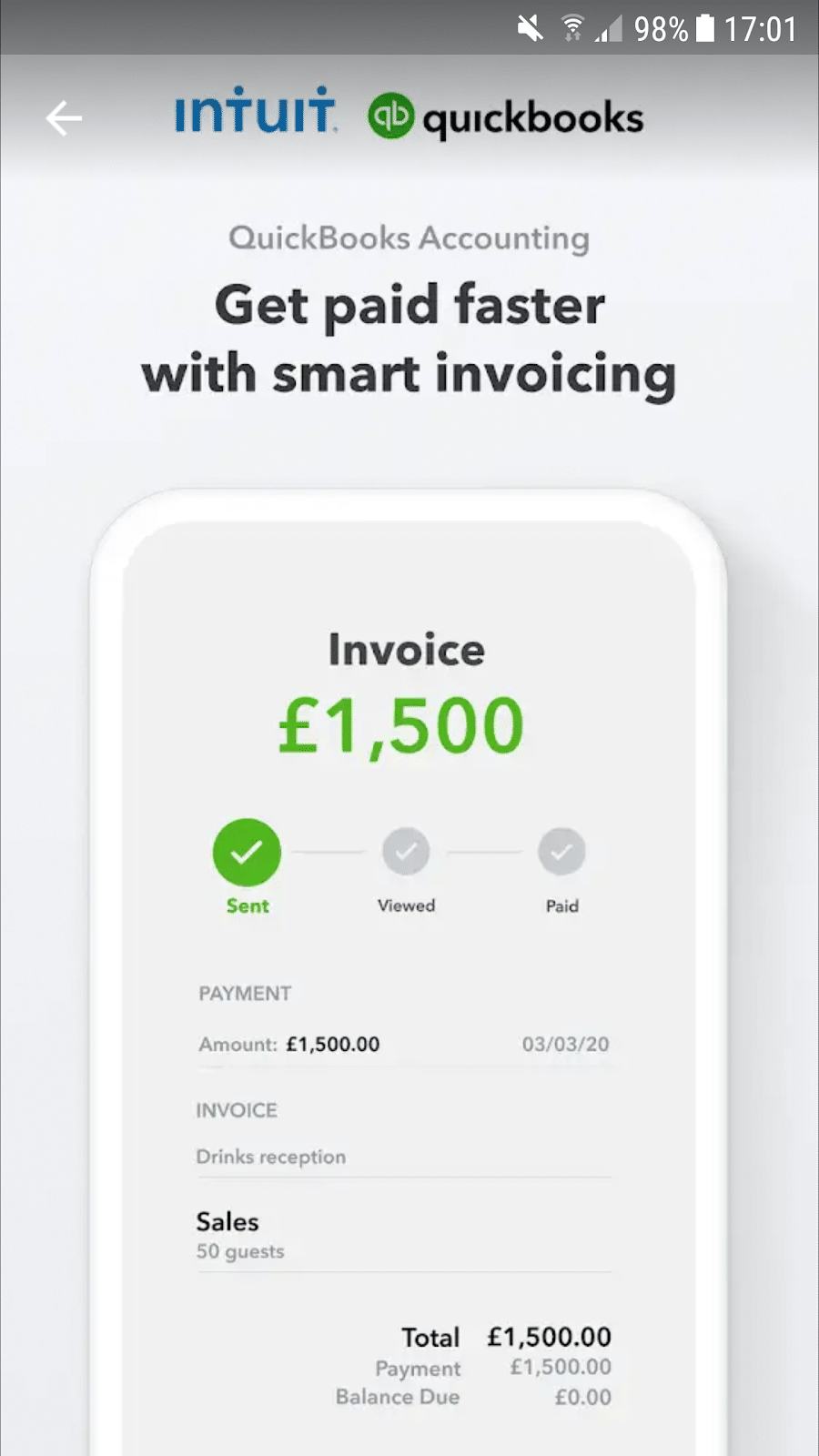
Users are typically more open to charges like these (as long as they are reasonable) as it can be seen as very similar to paying for a service – which is exactly what they’re doing!
If your app facilitates a transaction they need to complete then it’s only fair that a small fee is involved.
Final thoughts
The app world is tough, with 80-90% of apps being abandoned after just a single use.
But there are lots of different things you can do to give your app the best chance of surviving, and maybe even making it big.
Remember, a lot of these monetization ideas can be used in conjunction with one another – and it’s likely that the more you implement, the more chances you have to create a steady cash flow.
Visit our mobile app demo video page to find out how we can help your app stand out in the app store.

